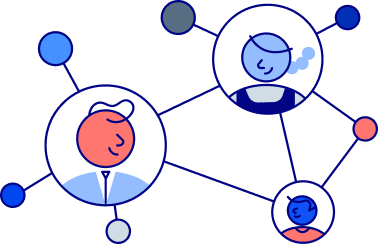H-1B wage levels are important to understand, especially for international students looking to obtain an H-1B visa. What are H-1B wage levels, how do you find them, and why do you need to know about them? Here’s all of the information you’ll need to understand H-1B wage levels and how they affect H-1B visa applications.
What Are H-1B Wage Levels?
Also called prevailing wages, H-1B wage levels describe the average wage employees earn in specific areas. Different jobs have their own H-1B wage levels — this data comes from the Foreign Labor Application Data Center, which stores information about jobs all over the country.
Different jobs have different levels of income, and they get ranked from level one to level four, four being the highest. Let’s look at what these levels mean:
H-1B Wage Level 1 is the entry-level wage for H-1B workers who have a basic understanding of performing the job’s duties. The level one wage is in the 17th percentile.
H-1B Wage Level 2 is the next step up. H-1B workers with relevant education and experience usually fall into this category. Level two corresponds to the 34th percentile.
H-1B Wage Level 3 makes up the 50th percentile. This H-1B wage level is given to experienced employees who have a deeper understanding of the job only attainable through years of experience. This wage level may include management work.
H-1B Wage Level 4 is the final level and corresponds to the 67th percentile of H-1B workers. The level four H-1B wage is reserved for competent workers who are experts in their field and typically comes with high-level management responsibilities.
Why H-1B Wages Are Important
The USCIS and the Department of Labor work together to grant H-1B visas to protect workers from being exploited by unfair labor practices. Because of this, anyone who wants to work abroad in the U.S. must pass the Labor Condition Application (LCA) test before they can accept a job offer or obtain an H-1B visa. One of the primary purposes of this test is to determine a worker’s H-1B wage level to ensure that they get paid fairly regarding their level of education and experience.
H-1B Wage Level Requirements for LCA
When applying for a job from abroad, your H-1B wage level determines what your salary will be; high wage levels mean a higher salary. Here’s the most crucial part: you cannot earn less than your determined H-1B wage level for your particular job in a specified area. If you earn less than your prevailing wage, you won’t be eligible for LCA approval.
Your H-1B wage level is a determining factor and primary requirement for applying for an H-1B visa. This is because H-1B visas get reserved for individuals with specific knowledge and skills that will benefit the country. Lower wage levels, like H-1B level one wages, are typically only given when there is a shortage of a desirable skill in the area you are applying.
If you’re applying for an H-1B job, it’s important to ensure that its wage level supports your case for an H-1B visa. One of the most common reasons for H-1B visas to get denied is when a job you apply for offers too low of an H-1B wage level for the position.
Related: An International Student’s Guide to Optimize Your Job Search Strategy
Finding the H-1B Wage Level for LCA

When you’re looking for H-1B wage jobs, it’s essential to know how to find the prevailing wage for the job and area you are applying for. Here’s the easy way to find the wage levels in your area:
Head over to the website of the Foreign Labor Certification Data Center. You’ll see a tab labeled “Wage Library,” and if you open it, you’ll see a search tool.
Now you can add the details of your job and area into the search field to find the specific one you are looking for. If you’re unsure about what industry the job you want to apply for is in, you can browse all of them. While that might take more time, it’s the best way to go about it if you aren’t 100% sure what the job would get classified as.
Once you’ve finished searching and found the job, industry, and area you were looking for, you should see detailed information about the H-1B wage level offered for the position. You can then compare that to the prevailing wage level to see if that job will work for your H-1B visa.
FAQ: H-1B Wage Levels
Let’s break down all of that information into easy answers. Here are the most commonly asked questions about prevailing wages with simplified explanations:
Question: What exactly are prevailing wages and H-1B wages?
First off, prevailing wages and H-1B wages mean the same thing; they are interchangeable terms. These wages are the average amount paid to people working similar jobs in the same area. They are industry and location-specific.
Question: How are H-1B wages determined?
There are three primary factors that determine a prevailing or H-1B wage. They are:
The nature of the job offer.
The location of the job.
The skills, knowledge, and duties required for the job.
Question: Okay, so how does this all work?
Employers are required to pay employees the H-1B wage of the area (or the advertised wage, if it is higher). This allows workers to not have to worry about earning less than candidates with similar qualifications. Basically, H-1B wage levels protect the economy and job market while ensuring that workers get treated fairly.
Related: Student Immigration Q&A
H-1B Visas & Wage Levels

It’s not uncommon for international students to apply for an H-1B visa, and understanding prevailing wage levels is essential for a successful application. This requires the approval of your LCA, and the job you apply for must be approved by the U.S. Department of Labor.
You can use the information above to find the H-1B wage levels for the jobs you want to apply for in your specific area. Remember, to get approved for an H-1B visa; the job offer must pay a salary that matches or exceeds the wage level in its immediate location.
Are you an international student looking for the tools to succeed? Check out Interstride for students to get everything you need from career opportunities and visa support to productivity tools and more!
























